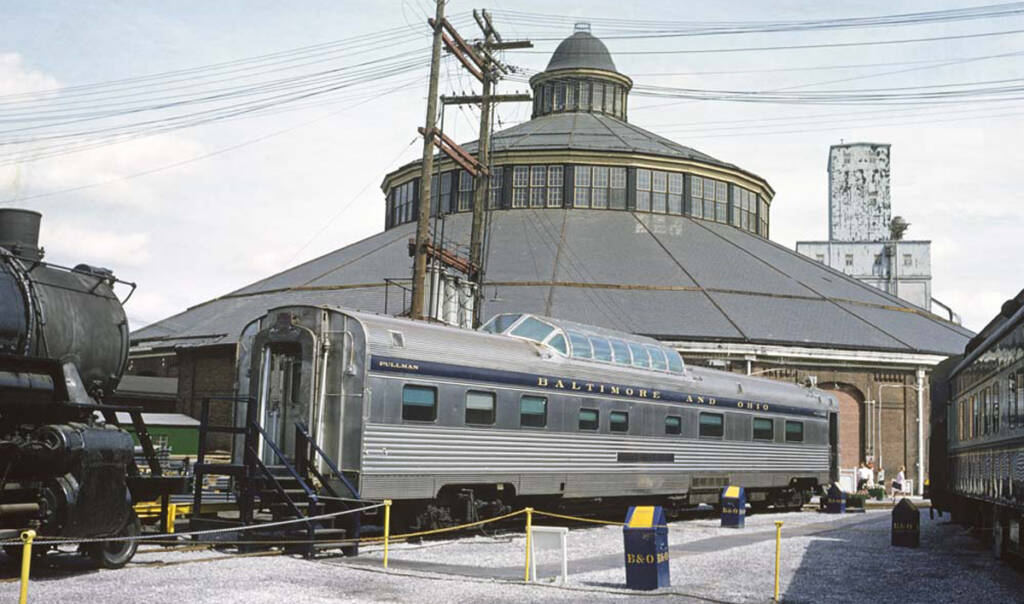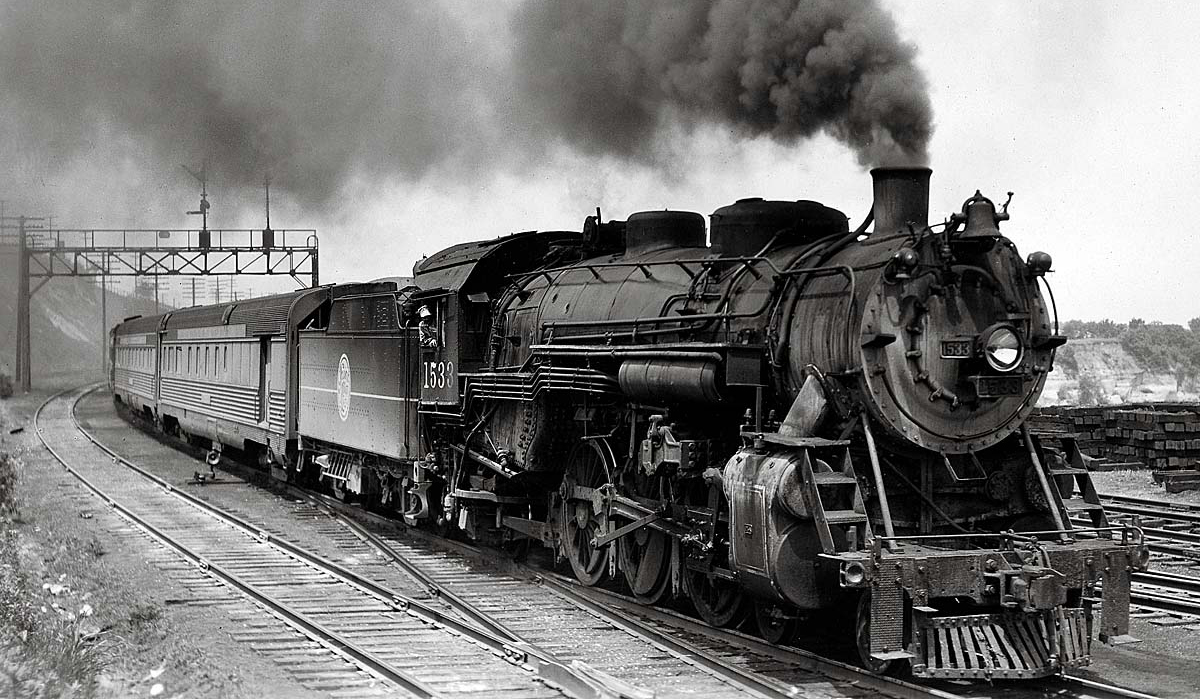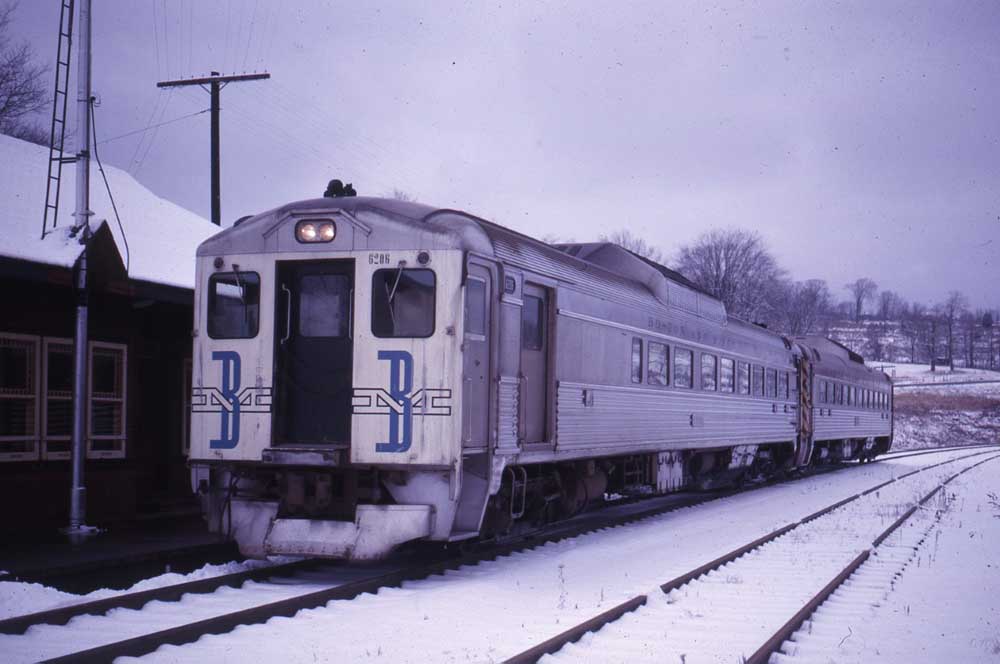
Following the delivery of dome cars constructed for the Union Pacific and Wabash for the City of St. Louis in 1958, U.S. intercity passenger rail service entered into what turned out to be a terminal illness; thereafter, no more new dome cars were ordered.
However, a different factor in the U.S. railroad industry — mergers — would prove to have an impact on the use of the dome cars. In 1957, Louisville & Nashville merged with its long-time partner Nashville, Chattanooga & St. Louis, followed by the amalgamation of parallel coal-haulers Norfolk & Western and Virginian in 1959; neither combination had any immediate impact on dome car usage, however.
But with its appetite for mergers and acquisitions whetted, N&W took a bolder step in 1964 by adding both the Nickel Plate and Wabash Railroads, as well as some other trackage, allowing the Norfolk & Western to expand substantially into the Midwest, and as far west as Kansas City. In 1966, this consolidation resulted in the assignment of former Wabash Blue Bird dome coaches to the N&W’s historic territory, running on the daylight Cincinnati-Norfolk Powhatan Arrow. Although patrons and railfans in central Illinois might not have enjoyed this, it would be hard to argue against the fact that their new Appalachian route was far more worthy of a dome car in terms of scenery than previously.
Following the Arrow’s demise, this dome car service was transferred to the remaining passenger train on this route, the Pocahontas, which lasted until the advent of Amtrak on May 1, 1971. The final train was pulled on its eastbound run by a steam locomotive, former Nickel Plate 2-8-4 No. 759.
In the interim, in 1964, the Milwaukee Road had sold four of its 10 Superdome full-length dome lounges that were no longer needed following the 1961 discontinuance of the Olympian Hiawatha. The big domes went to Canadian National for its transcontinental service, a belated response to the Canadian Pacific’s introduction of such in 1955.
While the Illinois Central had participated in dome car service seasonally on the City of Miami, it utilized cars leased from the Northern Pacific’s fleet. In 1967, the IC acquired six of the Missouri Pacific’s dome coaches and assigned them to the City of New Orleans and the City of Miami in a transaction that essentially reversed the scenery factor described above between Wabash and N&W.
By the time Amtrak was clearly on the horizon in early 1971, many dome cars had become surplus, notably with the discontinuance of the California Zephyr in 1970, since this train operated routinely with five dome cars. The Western Pacific’s former CZ dome coaches were acquired by the new private operator Auto-Train, which began operating in December 1971 along with domes from Santa Fe and Union Pacific. Interestingly, Auto-Train used the dome seating in its former Santa Fe full domes for revenue seating, an unusual practice in North America.

By 1976, Auto-Train had more than 40 dome cars on its roster; for that matter, when Amtrak revived this service in 1983, dome cars continued to be in the consists until the remaining Heritage cars, including domes, were replaced by Superliner equipment.
Technically not dome cars per se, the United Aircraft-built Turbo-Trains utilized primarily in Northeast Corridor service did feature domes at each end of their bi-directional turbine-powered consists. As a part of the Northeast Corridor demonstration project for the then newly formed U.S. Department of Transportation, they went into service between New York and Boston in 1969 and were taken over by Amtrak upon its formation.
This type of equipment also operated in Canada, initially by Canadian National, and later, VIA, principally in the Montreal-Toronto corridor. Since the dome atop the power cars at each end served as the operating cab, in many ways the passenger seats to the rear of the cab could be considered the all-time ultimate railfan seats, at least in North America. This also harkened back to the raison d’être for dome cars in the first place: the view forward out of the cab of EMD’s FT diesel freight locomotives.
Amtrak continued to operate numerous dome car lines in the early years of its existence. Some, like the Pleasure Dome on the Santa Fe’s Super Chief, continued to operate on their pre-Amtrak routes. However, Amtrak also established dome service in markets such as Milwaukee-St. Louis (via Chicago), where it had not been previously.
And in what could be considered an ironic move, the national railroad passenger carrier installed dome cars on the Chicago-Newport News (Va.) portion of the route that would become the Cardinal. This was slated to have seen domes in the form of the C&O’s Chessie, but that train never entered revenue service.
All three railroads that did not join Amtrak at its inception — Denver & Rio Grande Western, Southern Railway, and the Rock Island — operated dome cars during this era. The D&RGW simply utilized its stock of California Zephyr equipment (sans sleeping cars, except for the observation sleeper lounge) and launched the Rio Grande Zephyr between Denver and Salt Lake City, operating three round trips per week.

In a move that would have been hard to predict a decade prior, the Southern Railway acquired a pair of former Wabash dome cars from the N&W (the NS merger would take place over a decade later). A dome parlor lounge ran on alternate days between Atlanta and New Orleans (three weekly round trips), while a Pullman Standard-built dome coach made a round trip between Asheville and Salisbury, N.C., on the three days per week this train ran.
Finally, the Rock Island utilized a former Chessie/later Rio Grande dome observation on its Chicago-Quad-Cities train to provide meal and first-class service. The car was owned and staffed by a non-railroad entity, Butterworth Tours, which also acquired a pair of ex-Illinois Central (former Missouri Pacific) dome coaches.
In the fall of 1974, there was a quite unexpected new Amtrak route with dome car service. New York State had sponsored the return of passenger service to the New York City-Montreal route via Albany, with Delaware & Hudson providing not only the route but also some of the equipment. The latter included a pair of leased Canadian Pacific Skyline domes, which also provided meal service, while other D&H cars were being refurbished.
The two cars were lettered for the D&H, given upstate New York regional names, and yellow letterboards. This also involved the return of the D&H Alco PA passenger locomotives to service (including a substantial rebuilding), which in railfan circles tended to overshadow the use of the dome cars. Alas, by the summer of 1975 the domes were gone, replaced by D&H diner lounges that served previously on Rio Grande’s Prospector.
More recently, some domes have become the province of independent operators, including scenic/tourist railroads; some now run behind steam, which was something that many never experienced in their “first” careers. The Union Pacific includes some domes in its business car fleet. Some of these, including the dome observation lounge City of San Francisco, have been re-acquired from other entities; this car, for example, ran on the original, privately operated Auto-Train.
The Baltimore & Ohio sleeper dome Moonlight Dome had been essentially “stuffed and mounted” at the B&O Museum in Baltimore, but reappeared first in private car/train service, and more recently has been restored to its original B&O paint and lettering as a part of the CSX executive fleet. Norfolk Southern has a full-length dome among its office cars; it’s been pointed out that while it is the largest of these cars on the NS roster, it is named for the second-smallest U.S. state: Delaware.
For longevity, however, pride of place goes to the former Canadian Pacific equipment that arrived in 1955 to re-equip the Dominion and to create the Canadian, and is now being used by VIA Rail Canada on its version of the Canadian. Yes, some of the cars have been modified, and they no longer operate daily, but the domes still perform the mission for which they were intended — at least as far east as Toronto — when they entered service in 1955.
















